I don’t know much about art, but I know what I like.
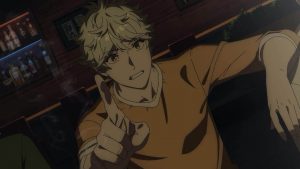 Calendars aren’t the hard and fast boundaries of anime seasons they once were. The rise of streaming services – especially non-Japanese ones – in anime distribution is a major reason for that. It’s not that unusual to have two major shows or more premiere before the prior season ends, but it’s still a jolt to have my two top picks of the season drop a week before the calendar flips. The rest of the world will get Blue Period a week from now – in Japan, Netflix has already delivered the goods. As with most Netflix shows I need to decide how (when) to cover it. But to be honest it would be very difficult for me to wait on the series that strikes me as overwhelmingly likely to be the season’s best.
Calendars aren’t the hard and fast boundaries of anime seasons they once were. The rise of streaming services – especially non-Japanese ones – in anime distribution is a major reason for that. It’s not that unusual to have two major shows or more premiere before the prior season ends, but it’s still a jolt to have my two top picks of the season drop a week before the calendar flips. The rest of the world will get Blue Period a week from now – in Japan, Netflix has already delivered the goods. As with most Netflix shows I need to decide how (when) to cover it. But to be honest it would be very difficult for me to wait on the series that strikes me as overwhelmingly likely to be the season’s best.
 The funny thing is, while I love art, a true understanding of its creative process will always be denied me. I have absolutely no talent for it, and lack the patience to cultivate whatever little I do possess. Yet I find Blue Period to be absolutely riveting in the specific as well as general sense. I think series about creativity tend to share a certain quality – if they’re good, that is. Whatever your creative outlet is – painting, music, poetry, prose, whatever – the process is somewhat universal. The emotional journey is largely shared. And good stories about creativity (of which Blue Period is one) always manage to distill the essence of it down to those universal elements.
The funny thing is, while I love art, a true understanding of its creative process will always be denied me. I have absolutely no talent for it, and lack the patience to cultivate whatever little I do possess. Yet I find Blue Period to be absolutely riveting in the specific as well as general sense. I think series about creativity tend to share a certain quality – if they’re good, that is. Whatever your creative outlet is – painting, music, poetry, prose, whatever – the process is somewhat universal. The emotional journey is largely shared. And good stories about creativity (of which Blue Period is one) always manage to distill the essence of it down to those universal elements.
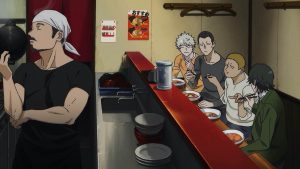 The protagonist is Yaguchi Yatora (Mineta Hiromu), a second-year high schooler. Yatora goes through the motions of being a 16 year-old boy with aplomb. He plays the delinquent character in a harmless way, carrying cigarettes he rarely smokes and pulling all-nighters in Shibuya with his wolfpack. But he also studies his ass off, pulling excellent grades through hard work. The problem is that he can’t shake the feeling of going through the motions. He is indeed playing a character – the character of himself. And how many of us felt like that sometimes when we were sixteen (or a lot longer)?
The protagonist is Yaguchi Yatora (Mineta Hiromu), a second-year high schooler. Yatora goes through the motions of being a 16 year-old boy with aplomb. He plays the delinquent character in a harmless way, carrying cigarettes he rarely smokes and pulling all-nighters in Shibuya with his wolfpack. But he also studies his ass off, pulling excellent grades through hard work. The problem is that he can’t shake the feeling of going through the motions. He is indeed playing a character – the character of himself. And how many of us felt like that sometimes when we were sixteen (or a lot longer)?
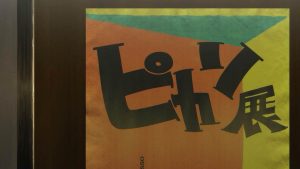 When I first encountered Blue Period, what struck me was how many times I recognized my life in it, despite almost none of the specifics being the same. This series gets being 16. It gets being a guy too (though I suspect much of the universality transcends gender), and it gets what it feels like to have no purpose. By extension, then, it also gets what it feels like to find a purpose – that indescribable euphoria that makes you feel that you’ve just woken up after being asleep your whole life. Joseph Campbell said “When you follow your bliss…doors will open where you would not have thought there would be doors, and where there wouldn’t be a door for anyone else.” The tricky part, of course, is having the faith to walk through them.
When I first encountered Blue Period, what struck me was how many times I recognized my life in it, despite almost none of the specifics being the same. This series gets being 16. It gets being a guy too (though I suspect much of the universality transcends gender), and it gets what it feels like to have no purpose. By extension, then, it also gets what it feels like to find a purpose – that indescribable euphoria that makes you feel that you’ve just woken up after being asleep your whole life. Joseph Campbell said “When you follow your bliss…doors will open where you would not have thought there would be doors, and where there wouldn’t be a door for anyone else.” The tricky part, of course, is having the faith to walk through them.
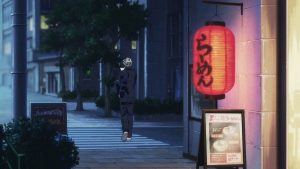 Yatora-kun’s bliss, of course, is art. A chance encounter with the painting of his sempai Mori-san (Aoyagi Mayu) is the watershed moment after a lifetime of sleeping through art class. The slightly green tone of the figures he sees fascinates him – he doesn’t really get Mori’s explanation, but it sticks with him. One early morning after another all-nighter watching the Japanese soccer team playing in some far-off land, Yatora is struck by the aura of Shibuya at sunrise. It looks blue to him, even if it isn’t literally blue – he sees the blue in his mind’s eye. And having seen it, be feels a new compulsion – to paint what he sees and share it with the world.
Yatora-kun’s bliss, of course, is art. A chance encounter with the painting of his sempai Mori-san (Aoyagi Mayu) is the watershed moment after a lifetime of sleeping through art class. The slightly green tone of the figures he sees fascinates him – he doesn’t really get Mori’s explanation, but it sticks with him. One early morning after another all-nighter watching the Japanese soccer team playing in some far-off land, Yatora is struck by the aura of Shibuya at sunrise. It looks blue to him, even if it isn’t literally blue – he sees the blue in his mind’s eye. And having seen it, be feels a new compulsion – to paint what he sees and share it with the world.
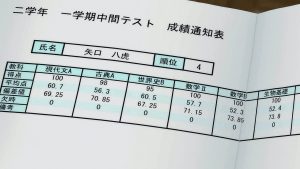 There are some other key players here. Ryuji (Hanamori Yumiri) is a somewhat mysterious figure Yatora calls “Ryuji-kun” despite their wearing the girl’s uniform, who later shows up in the boy’s. Saeki-sensei (Hirano Fumi), the art teacher, is plain-spoken and gently sarcastic but clearly knows her business. Ryuji and Yatora obviously have a checkered history, but he’s quietly moved when they unknowingly praise his Shibuya cityscape. When he goes to Saeki-sensei for advice on art school, she paints an unsparing picture – the only public art college in Tokyo is Geidai (Tokyo University of the Arts) and their ratio of applicants to acceptance is the highest in Japan (200-1). But she also notes that it’s the kids who do what they love to do who’re the strongest in life.
There are some other key players here. Ryuji (Hanamori Yumiri) is a somewhat mysterious figure Yatora calls “Ryuji-kun” despite their wearing the girl’s uniform, who later shows up in the boy’s. Saeki-sensei (Hirano Fumi), the art teacher, is plain-spoken and gently sarcastic but clearly knows her business. Ryuji and Yatora obviously have a checkered history, but he’s quietly moved when they unknowingly praise his Shibuya cityscape. When he goes to Saeki-sensei for advice on art school, she paints an unsparing picture – the only public art college in Tokyo is Geidai (Tokyo University of the Arts) and their ratio of applicants to acceptance is the highest in Japan (200-1). But she also notes that it’s the kids who do what they love to do who’re the strongest in life.
 Another reality that Blue Period clearly gets is, well- reality. Dreams are great, but they’re a lot easier to chase if you’re rich. The real reason Yatora works so hard on his studies (we find out organically rather than through clumsy exposition) is that his parents aren’t well-off. He needs a scholarship somewhere and is determined not to cause them hardship. How does that reconcile with his newfound passion for art, which he notes himself is hardly a career path with a wealth of financial opportunities? Yet when he’s honest with himself – for the first time, really – Yatora realizes that this is the only thing he’s ever actually wanted wholeheartedly to do. It’s a real-world problem fiction too often brushes aside.
Another reality that Blue Period clearly gets is, well- reality. Dreams are great, but they’re a lot easier to chase if you’re rich. The real reason Yatora works so hard on his studies (we find out organically rather than through clumsy exposition) is that his parents aren’t well-off. He needs a scholarship somewhere and is determined not to cause them hardship. How does that reconcile with his newfound passion for art, which he notes himself is hardly a career path with a wealth of financial opportunities? Yet when he’s honest with himself – for the first time, really – Yatora realizes that this is the only thing he’s ever actually wanted wholeheartedly to do. It’s a real-world problem fiction too often brushes aside.
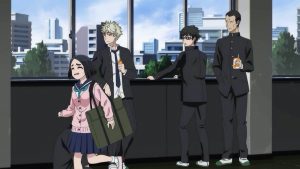 There are so many of those “truth” moments which I was talking about – like when Mori gently reminds Yatora that describing someone as “talented” minimizes the hard work they put into their craft (he instantly realizes from his own experience that she’s right). Or the euphoria when his friend Koigakubo (Kamio Shin’ichirou) grasps the feeling of Yatora’s Shibuya painting. These moments betray a real understanding of the human experience and the creative journey, one that isn’t subsumed under a pile of cliches and tropes.
There are so many of those “truth” moments which I was talking about – like when Mori gently reminds Yatora that describing someone as “talented” minimizes the hard work they put into their craft (he instantly realizes from his own experience that she’s right). Or the euphoria when his friend Koigakubo (Kamio Shin’ichirou) grasps the feeling of Yatora’s Shibuya painting. These moments betray a real understanding of the human experience and the creative journey, one that isn’t subsumed under a pile of cliches and tropes.
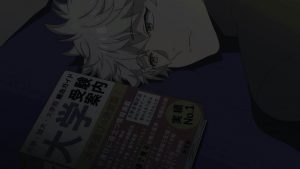 Blue Period certainly wouldn’t have suffered through a production by Bones or Wit, with a lavish budget and an auteur director like Watanabe Ayumu. But truthfully, Seven Arcs delivers everything it needs to here, even if the visuals aren’t flashy and the direction is more clean and direct that stylized. Among the cast Hirano is really the only instantly recognizable voice, and I think that totally works – the kids are generally newer and little-known seiyuu, and that helps sustain the air of authenticity so critical to Blue Period’s magic. We don’t know how many episodes we’re getting (the manga has ten volumes), but whether one cour or two, Blue Period is as close to a sure thing as you’ll find in anime in 2021. It’s going to be outstanding – it’s a matter of just how high it can raise the bar.
Blue Period certainly wouldn’t have suffered through a production by Bones or Wit, with a lavish budget and an auteur director like Watanabe Ayumu. But truthfully, Seven Arcs delivers everything it needs to here, even if the visuals aren’t flashy and the direction is more clean and direct that stylized. Among the cast Hirano is really the only instantly recognizable voice, and I think that totally works – the kids are generally newer and little-known seiyuu, and that helps sustain the air of authenticity so critical to Blue Period’s magic. We don’t know how many episodes we’re getting (the manga has ten volumes), but whether one cour or two, Blue Period is as close to a sure thing as you’ll find in anime in 2021. It’s going to be outstanding – it’s a matter of just how high it can raise the bar.
OP: “EVERBLUE” by Omoinotake


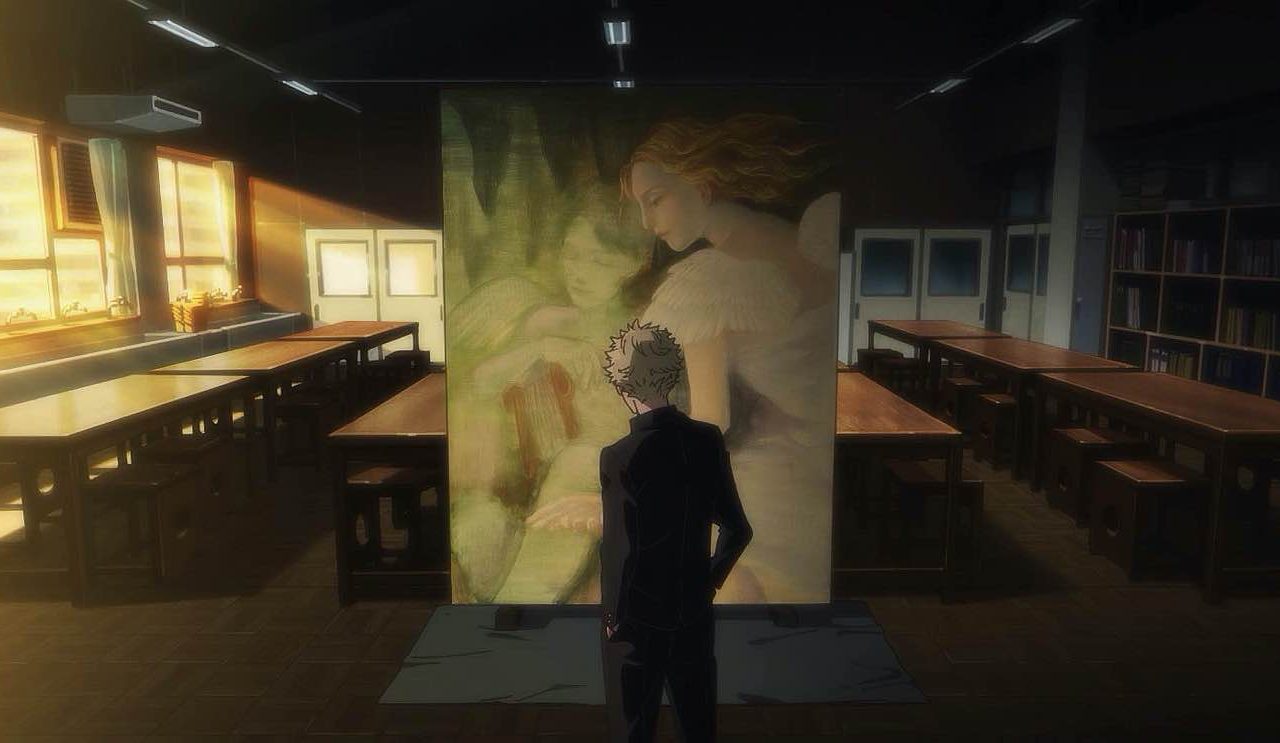
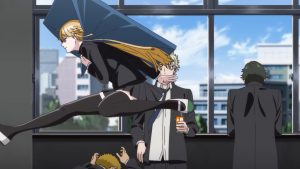
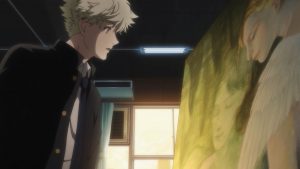
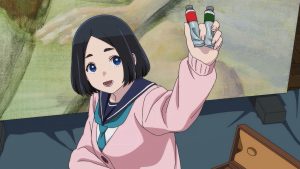
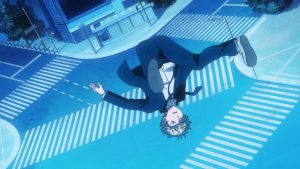
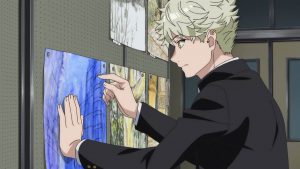
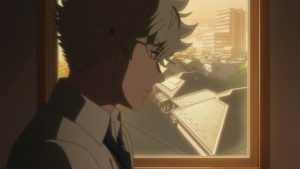
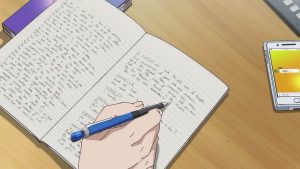
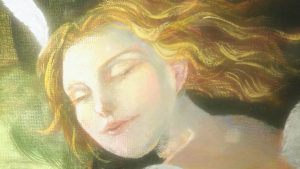
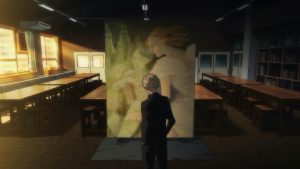
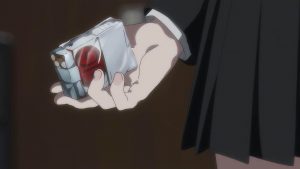
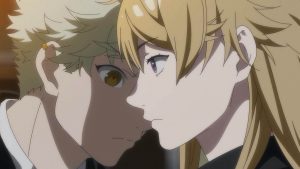
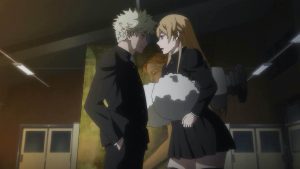

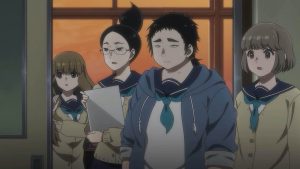

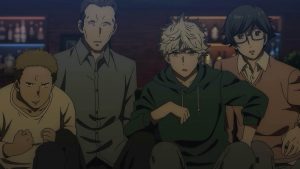
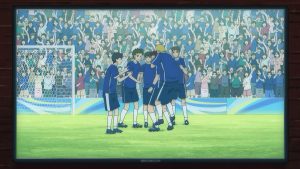
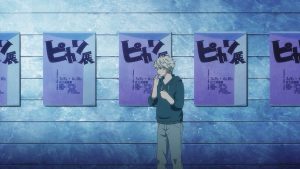
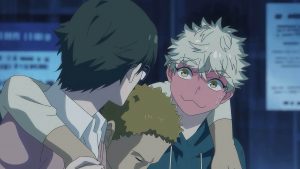
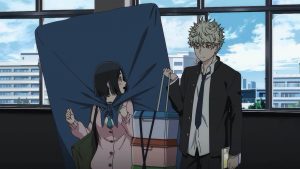
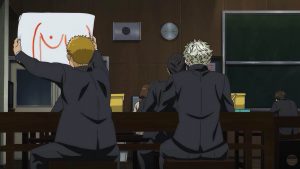

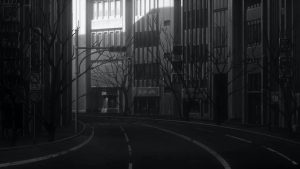
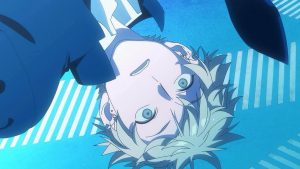

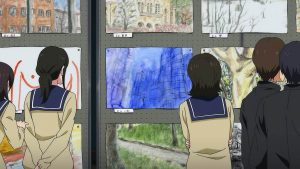
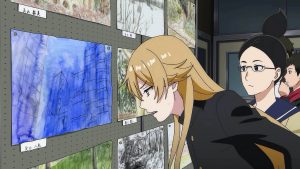

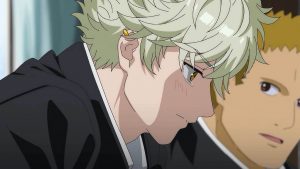
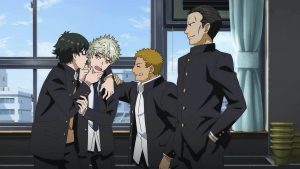
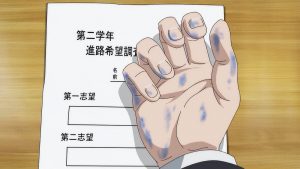
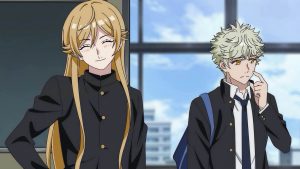
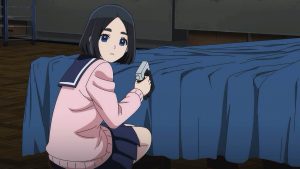



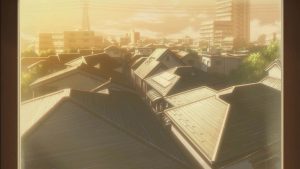




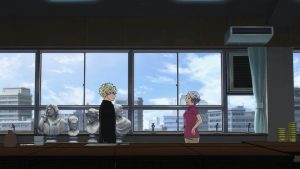

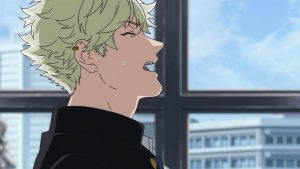


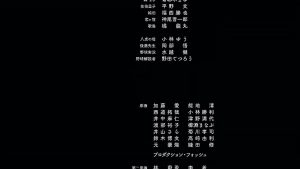
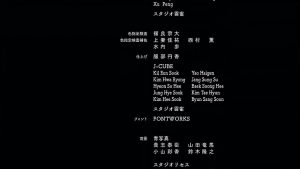


leongsh
September 26, 2021 at 10:39 pmOut of all the new series starting this new Autumn/Fall season, Blue Period is the only show that I have been looking forward to. That’s because I have been following the manga for some time. The first episode does what it needs to with a good adaptation of the manga series. My main curiosity is how they are going to incorporate the major art works highlighted in the manga into the show. Will they just draw something close or possibly get clearance to post photographic versions of those works.
Guardian Enzo
September 27, 2021 at 6:59 amI hadn’t really thought about that. I suspect they’ll draw something ballpark (hiring an artist(s) specifically for that purpose).
Snowball
September 26, 2021 at 11:51 pmI love the authenticity of this episode. Yaguchi and his plights feel so realistic, yet he comes off as endearing and not tropey and I also enjoy Saeki-sensei, sarcastic yet knowledgeable and, for once, a very believable mentoring character.
Guardian Enzo
September 27, 2021 at 6:58 amThat authenticity is Blue Period’s calling card for me.